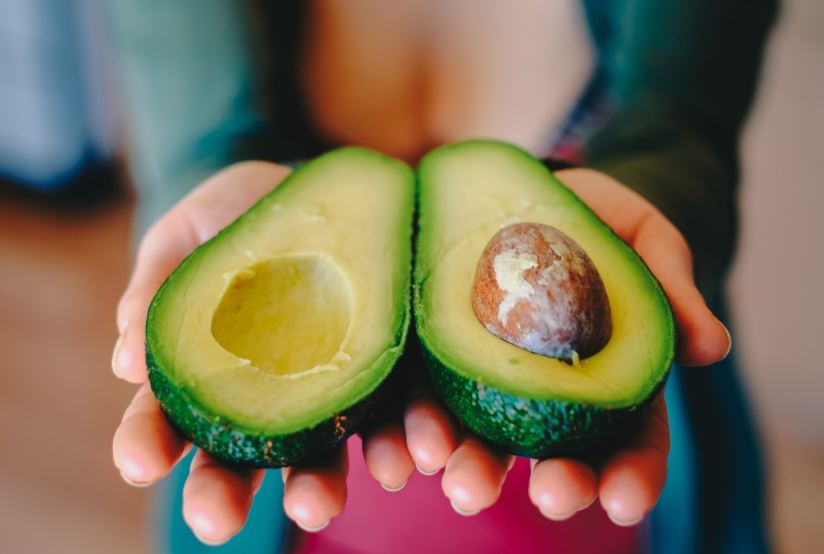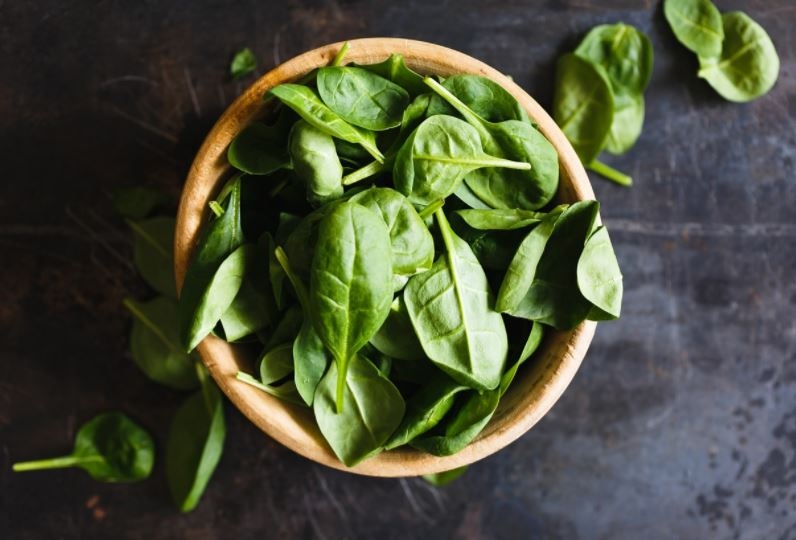So you’ve cut carbs and kickstarted your keto diet on the road to leaning out and toning up. As you might agree, the ketogenic diet philosophy seems straightforward enough: By reducing your carb intake, you change your body’s primary fuel source from glucose -- i.e., sugar -- to compounds called ketones, which shifts your body into a fat-burning mode called ketosis.
The keys to a successful ketogenic diet are low carbs, moderate protein and high amounts of healthy fat. To be more specific, calculating what you should eat on a ketogenic diet is the first step to success, since every body is different. Though many have found the keto diet to be a great way to rev up metabolism, the road to success is sometimes not without potholes -- particularly in the first week.
Read on for a rundown of potential side effects of the keto diet as well as four excellent foods to eat to combat them.
Ketogenic Side Effects
During the first few days to a week of kicking off the keto diet, you might run into an unpleasant set of symptoms known as the "keto flu". As your body makes the transition from using glucose to using ketones for energy, there are a few symptoms you may have to soldier through as your body transforms its energy regulation system to rev up your calorie-burning.
Most side effects are temporary and will go away once your body has fat-adapted. In the meantime, read on to find out more about these potential effects, why they occur, how long you can expect them to last and what you can do to keep them at bay.
Dehydration
Dehydration -- perhaps the most common keto flu symptom -- occurs due to the depletion of the body’s glycogen stores. Since glycogen retains water molecules, your body may lose water as it loses glycogen. Dehydration can be further exacerbated by more frequent urination, which is a natural byproduct of the glycogen conversion process.
You can help your body to maintain a more optimal water level by drinking 6-8 oz glasses of water throughout the day. Everyone’s body is different, so stay tuned in to how your body is responding and/or whether you may need to increase your water intake. Since the body can only absorb so much water at a time, however, be sure not to overdo it!
Fatigue
Since the body will be initially inefficient at using and producing ketones, a very moderate carb intake will help boost your energy level and keep you running strong all day. This will help stabilize your blood sugar, since your blood sugar levels will decline as a result of reduced sugar intake and the ketone conversion process. Eating a few healthy carbs will help you fight fatigue and avoid getting hangry!
Headaches
As your body’s water levels decline during the adaptation process, important minerals like magnesium and potassium may also be leached. Electrolytes -- which contain ions and are an essential part of healthy energy levels and body function -- may also decline due to decreased water levels.
A key part of beating keto flu-induced headaches may be water supplements such as Himalayan salt and foods high in potassium and magnesium (to replace depleted supplies). Supplementing with Himalayan salt by adding a few teaspoonfuls can also be an effective way to beat headaches.
Food Cravings and Irritability
Once you give up (most) carbs and sugar, your body may respond with intense cravings and, of course, irritability. It can be a tough adjustment, but it will be temporary if you see it through. Luckily, trading carbs and sugar for healthy fats should help your cravings and irritability subside within the first couple of weeks of starting the ketogenic diet.
Your insulin levels will even out and your cravings and mood swings will decrease as your body adjusts to using ketones as its primary form of energy. In the meantime, you can reduce irritability and food cravings by making sure you moderate your carb intake. The internet is rife with healthy snack suggestions and ideas!
Constipation
Your dietary change combined with any fiber deficiencies may carry the unfortunate side effect of constipation. This is temporary, but in the meantime, drinking plenty of water is your best weapon against bathroom back-up. Loading up on fiber is also a potent anti-constipation tactic.
Upset Stomach/Diarrhea
This can happen due to to increased fat content and the shock of dietary change to your body.
- Avoid sources of unhealthy fats
- Avoid sugar-free foods
- Avoid consuming a high-protein, low-carb and low-fat diet.
Low-grade Acidosis
Since the keto diet calls for increased consumption of acidic foods like meats and cheeses with fewer pH-balancing alkaline foods, this potential side effect can wreak havoc on your metabolism. Your doctor can evaluate you if you suspect this condition as well as prescribe treatment if necessary.
4 Best Keto Foods to Combat Keto Flu

Avocados
Avocados are an excellent source of healthy fats and are also high in potassium, fiber and magnesium. In fact, one avocado contains:
- 975 mg of potassium
- 13 g of fiber
- 58 mg of magnesium
Its fiber content will help your digestion and help to prevent constipation, while its potassium helps to balance out the sodium you lose on the keto diet, which fights fatigue and reduces your risk of kidney stones and headaches.
The mineral content in avocados isn’t the only great health benefit they offer:
- Avocados are high in healthy fats, i.e. PUFA (polyunsaturated fatty acids).
- They are high in MUFA (monosaturated fatty acids).
- They are low in saturated fats and cholesterol.
There are many ways to incorporate this nutrient-rich vegetable into your ketogenic meal plan. The following are a few simple, nutritious ideas:
- Mix avocados into your smoothie for an extra-creamy and flavorful consistency.
- Mix cocoa powder and honey into one small avocado for avocado chocolate.
- Mix chopped avocados into your egg breakfast.
- Spread avocado onto sandwiches for a healthy alternative to mayo.
Salmon
This keto-friendly fish is a known superfood high in potassium and magnesium. In fact, one 4-oz salmon filet contains 390 mg of potassium as well as 31 mg of magnesium.
- The protein in this flavorful fish helps you feel full longer, reducing food cravings during the first week of your ketogenic diet.
- They are high in potassium, helping to balance out the potassium lost via diet changes.
Salmon has a host of other health benefits:
- They are high in omega-3's.
- Studies have linked the omega 3 fatty acids in wild-caught salmon to improved memory and brain function.
Coconut Oil
Coconut oil is high in food fats called medium-chain triglycerides (MCT's), which are quickly converted into ketones and help to combat fatigue during the keto flu. It is also chock-full of healthy fats to help keep you fuller, longer.
Here are some fun ways to incorporate coconut oil into your keto meal plan:
- Brew your own keto coffee (or “bulletproof coffee”), a high-fat, high-energy brew to keep you going all day.
- Use it in fat bombs, which are yummy truffle-type chocolates made entirely from healthy fats.
- Cook with coconut oil instead of butter or other oils for a keto boost!
Spinach
This dark green leafy veg is among the most nutrient-dense, low-carb vegetables you can consume. Spinach is rich in magnesium, which increases the alkaline content of your diet to help balance lost sodium and electrolytes. Two cups of raw spinach contain:
- 24 mg of magnesium
- 334 mg of potassium
- 1.4 g of dietary fiber
Here are some other fun facts on the health benefits of spinach:
- Two cups also contain 1.7 g of protein
- It is high in niacin, zinc, vitamins A, E, K & C, thiamin, folate and more.
- Since spinach is high in water and fiber, it helps to prevent constipation and dehydration.
How to eat it:
Instead of a salad with dressings potentially heavy in sugar and soybean oil, try cooking your spinach in coconut oil with pink Himalayan salt. The salt will add back the essential sodium you're missing in the first week of your diet, while the coconut oil adds fatigue-fighting MCT’s.
In Conclusion
As you can see, there are an arsenal of keto-friendly foods and tactics at your disposal to fight the keto flu on the road to ketosis. Everyone’s body responds differently to dietary changes and may require different methods to adjust. If you’ve found experienced one or a few side effects of the keto diet yourself, hopefully you’ve found at least a few great ways to ward off the low-carb body blues. A ketogenic diet meal plan is the best way to start a diet like this to ensure you're getting all the nutrients your body needs.
Author Bio: Janine Einhellig is owner and author at KetoDomain.com, a website focused on helping people achieve success on the ketogenic diet through information, meal plans and coaching. Janine enjoys writing and operating Keto Domain because of the great impacts the ketogenic diet can have on quality of life.
This article does not necessarily reflect the opinions of the editors or management of EconoTimes.



 TSMC to Hike Prices for Chips Made Outside Taiwan, Impacting Global Device Costs
TSMC to Hike Prices for Chips Made Outside Taiwan, Impacting Global Device Costs  Starbucks Revamps Cups to Ease Plastic Waste; New Design to Roll Out in US, Canada
Starbucks Revamps Cups to Ease Plastic Waste; New Design to Roll Out in US, Canada  Samsung Touts AI as Game-Changer in Outpacing Apple with Innovative Home Appliances
Samsung Touts AI as Game-Changer in Outpacing Apple with Innovative Home Appliances  Tokyo's Iconic Starbucks Overlooking Shibuya Scramble Crossing Reopens with Fresh Design
Tokyo's Iconic Starbucks Overlooking Shibuya Scramble Crossing Reopens with Fresh Design  LVMH Adds Bernard Aranault’s Sons Frederic and Alexandre Arnault to the Board
LVMH Adds Bernard Aranault’s Sons Frederic and Alexandre Arnault to the Board  FENTY x PUMA Launches New Creeper Phatty Earth Tone Collection
FENTY x PUMA Launches New Creeper Phatty Earth Tone Collection  LG Electronics Eyes $1 Billion Through Bond Deal
LG Electronics Eyes $1 Billion Through Bond Deal  Rivian Expands Layoffs With Additional 1% of Jobs Amid Growing EV Market Woes
Rivian Expands Layoffs With Additional 1% of Jobs Amid Growing EV Market Woes  The Original Mouthful: McDonald's Australia Revives Legendary Big Mac Chant with a Tech Twist
The Original Mouthful: McDonald's Australia Revives Legendary Big Mac Chant with a Tech Twist  Adidas Unveils Innovative Team Kits for Paris 2024 Olympics and Paralympics
Adidas Unveils Innovative Team Kits for Paris 2024 Olympics and Paralympics  HSBC Reportedly Axing Dozens of Additional Investment Banking Jobs in Asia
HSBC Reportedly Axing Dozens of Additional Investment Banking Jobs in Asia  Google Fired Workers Protesting Over Cloud Contract Deal With Israel
Google Fired Workers Protesting Over Cloud Contract Deal With Israel  JPMorgan to Leverage AI Across Banking Operations, Jamie Dimon Confirms
JPMorgan to Leverage AI Across Banking Operations, Jamie Dimon Confirms  Amazon Ditches Its ‘Just Walk Out’ Cashierless Shopping Tech, Decides to Offer the System to Other Stores
Amazon Ditches Its ‘Just Walk Out’ Cashierless Shopping Tech, Decides to Offer the System to Other Stores  Canada Set to Enforce OECD Crypto Tax Standards by 2026
Canada Set to Enforce OECD Crypto Tax Standards by 2026  PUMA and BMW MMS Launch Vibrant Crews Go Summer Collection
PUMA and BMW MMS Launch Vibrant Crews Go Summer Collection  OpenAI CEO Sam Altman's Worldcoin Unveils Human-Centric Blockchain, World Chain
OpenAI CEO Sam Altman's Worldcoin Unveils Human-Centric Blockchain, World Chain 





























